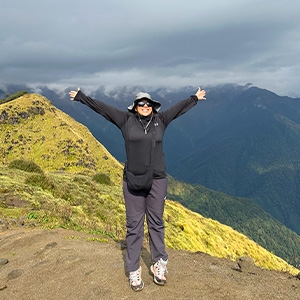Here are the Top 12 Most Beautiful Villages in Nepal:
Kagbeni
Kagbeni is a stunning village in the Nepal Himalayas and is situated in the Kali Kali Gandaki River valley. The settlement of Kagbeni, which can also be referred to as the Gateway to Upper Mustang, can be found at an elevation of 3,700 meters. Within the dry landscape of Mustang, you will find that Kagbeni is like a verdant oasis for you to explore. On its way, the Kali Gandaki River may be seen flowing calmly and widely across the landscape. Kagbeni, located a significant distance from both Sprint City and Dance Festival, is waiting for you with its bold beauty. The simple stone buildings, breathtaking scenery, mouthwatering apple pies, and Yak Burger that can be found at Kangbenii will make your hike unforgettable. Tibetan culture has had a profound effect on Kagbeni's lifestyle and atmosphere. The arid landscape of Kagbeni is brightened by the presence of "Chhortens" and prayer wheels, while the Tibetan flag, with its vibrant colors of blue, white, red, green, and yellow, waves in the breeze. In the past, getting to Kagbeni was not an easy task.
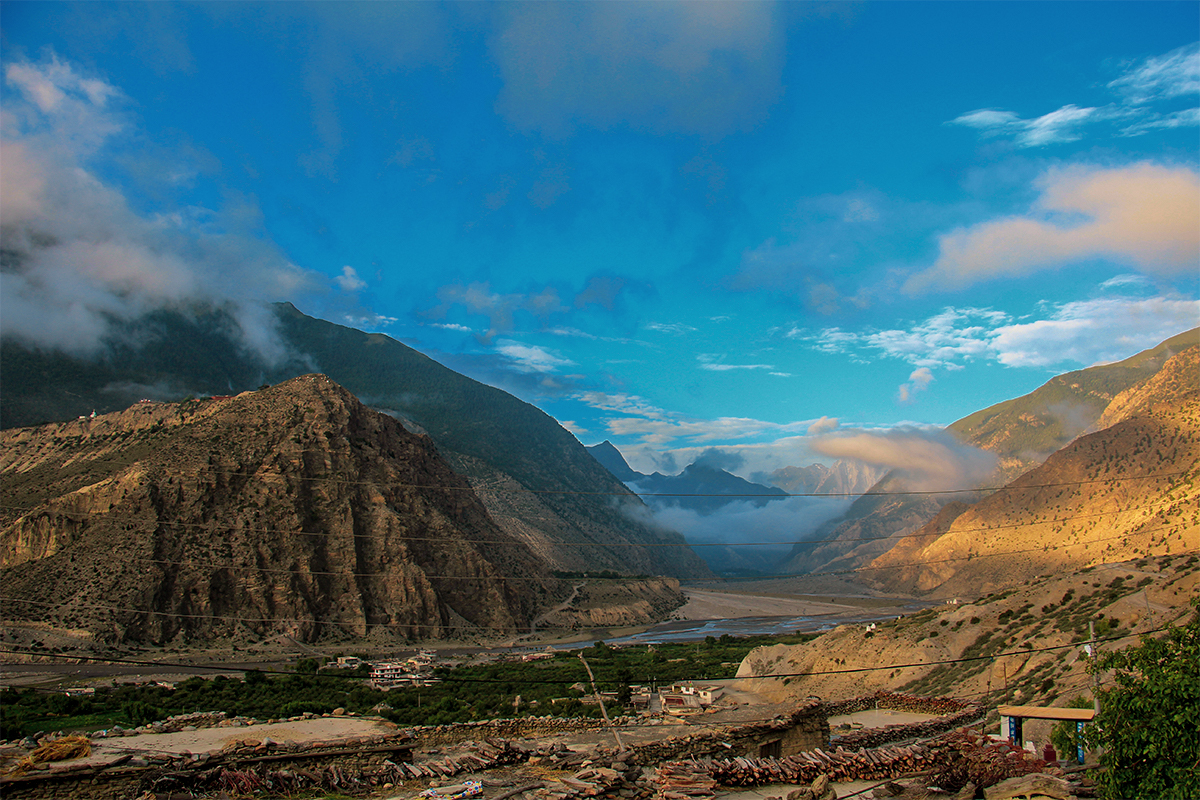
A journey of three to four hours will get you there from Jomsom, or you may drive there in approximately an hour. The town of Kagbeni, which can be found on the way to the holy site of Muktinath, is visited by tens of thousands of tourists each year. Kagbeni may be a small village, but it has endeared itself to people all over the world thanks to the extraordinary natural beauty, culture, tradition, and landscape it possesses. There are a few historic monasteries that are well worth a trip to see. The majority of the population was involved in farming, animal husbandry, trading, apple harvesting, and the manufacturing of apple brandy and wine on a local level.
Highlights of Kagbeni
- An excellent glance at Kheni.
- Hiking on the way to Lhungfu Cave
- Pay a visit to the Kag Chode Thupten Samphen Ling Gompa
- Be knowledgeable about the traditions and celebrations of Tibetan culture.
- Explore the historic settlement.
Ghalegaun
The village of Ghale Gaun is one of the most well-known tourist attractions not only in Nepal but also among the other SAARC nations. It can be found in the Lamjung district, 205 kilometers to the north of Kathmandu. Due to its location at approximately 2100 meters above sea level, this community offers a breathtaking panorama that is unparalleled in all of its surrounding areas. The scene of the mountain range at daybreak, as seen from the viewpoint of the Ghale settlement.
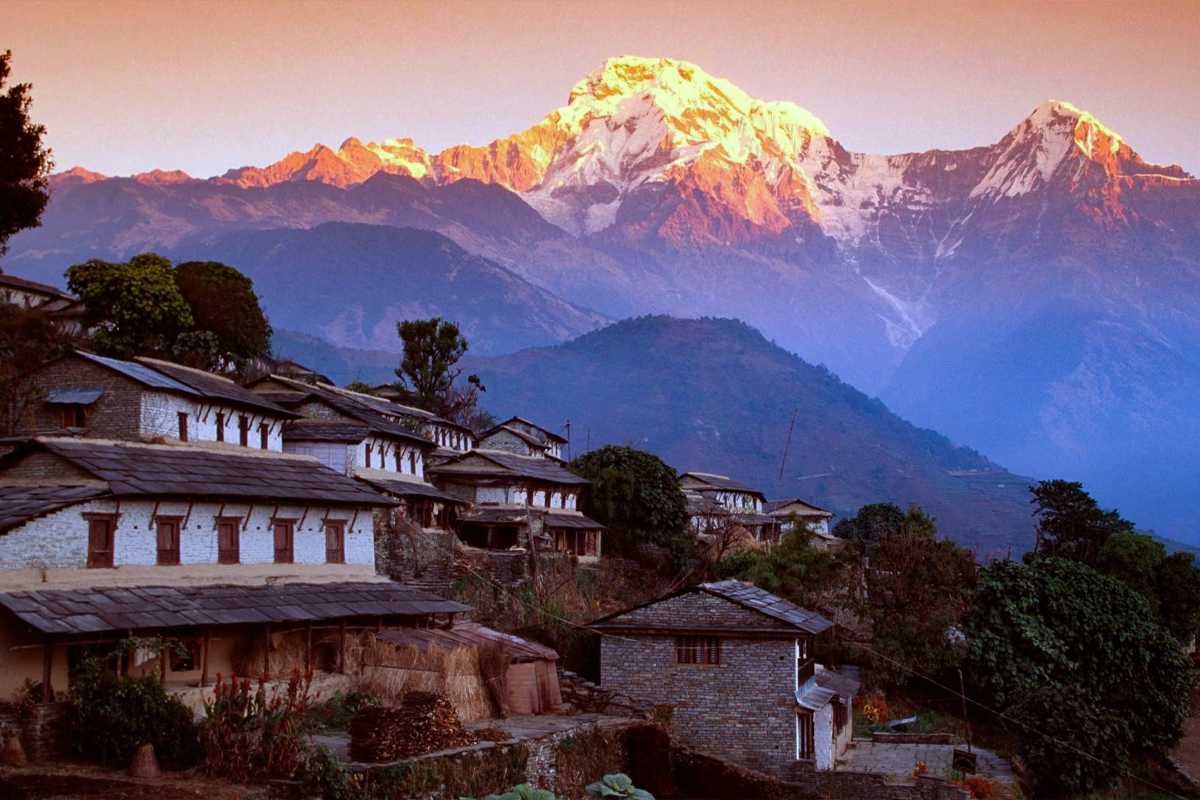
The Gurung community is represented by the majority of Ghale Gaun's population, which is located within the Annapurna Conservation Area. The natives are seen as the embodiment of the phrase "Atithi Devo Bhava," which translates to "guest is like a God." The house stays in this village are extremely popular. After Sirubari in the district of Syangja, Ghalegaun has emerged as Nepal's second most popular Rural village in Nepal for tourist attraction. In this settlement, there are approximately 120 homes, and among them is the residence that serves as a bed and breakfast. The people who live here have no choice but to devote their lives to farming, animal husbandry, and military service in either the Nepali or British army. Visitors visiting the village of Ghale are greeted with tikas and garlands as part of the community's custom, and they are also given tikas and garlands as they depart. The community is known for its cozy hospitality, its long-standing practice of cooking over wood fires, and the organic cuisine that is grown and produced locally. From the viewpoint close to the settlement in the morning, one may take in the breathtaking panorama of the mountains to the east, including Manaslu, Himachuli, and Boudha Himal; to the north, including Lamjung Himal and Annapurna Himal; and to the west, including Machhapuchhre Himal. visitors leave this village with a heart full of gratitude and minds steep in tranquility as they recognize the geographical isolation of Nepal, the difficult living, the natural beauty, the true loving behavior of the people, and the vivid example of cooperation.
Highlights of Ghalegaun
- Discover the breathtaking vistas of the mountains.
- Enjoy the breathtaking sunrises and sunsets from the view towers.
- Get to know the Gurung community and their fascinating customs.
- The most memorable experience during homestays.
Kyanjing Gompa
At an altitude of 3,860 meters, Kyanjin Gompa is a tiny Buddhist community that may be found in the middle of the Langtang region. Because of the overwhelming lap of nature, the breathtaking scenery, and the rich culture that is present in this relatively small area of land, it has become a popular destination for thousands of hikers from all over the world. The Langtang Village Trek to Kyanjin-Gompa is among the journeys that offer the greatest variety of different types of wilderness. Some of its most notable features include the mountain peaks and the glaciers. The earthquake that occurred in 2015 was particularly devastating to the Langtang valley. This calamity was responsible for the destruction of a significant portion of the community as well as an ancient gompa. If you trek the Langtang Valley, you will have acclimated to this settlement during your journey. From Kyanjin Gompa, you could go to the Kyanjin Ri and Tserko Ri summits. In addition to these peaks, there are many other things to discover along the valley floor, such as the cheese factory.
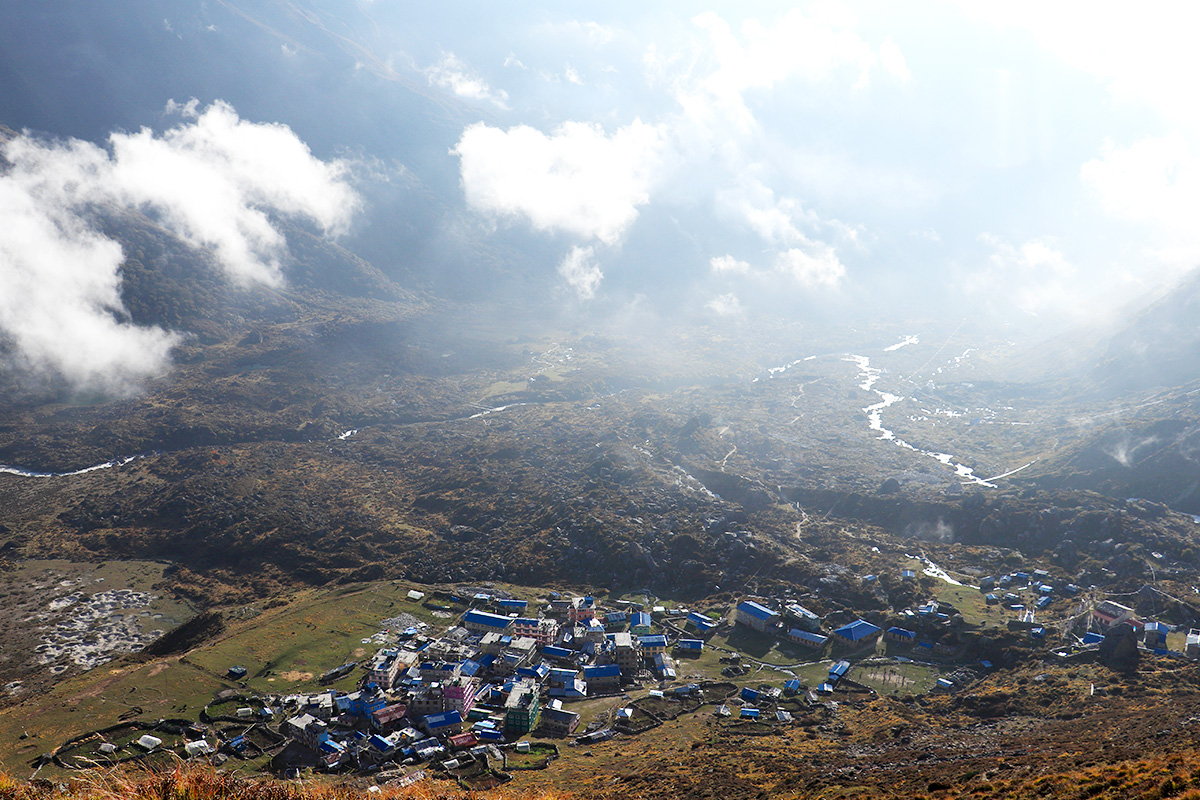
The magnificent Langtang Lirung, which stands at 7,234 meters, serves as a magnificent background for the already wonderful environment. As a result of the fact that trekkers are required to travel through all of the Langtang National Park, the variety of flora and fauna that they will see is extremely high. We constantly encounter other hikers and visitors along the paths, and the routes are really popular. Tserko Ri is the mountain that marks the peak level of the hike (5,150m). Having said that, this mindset is the only issue at hand. The terrain of the trail is very easy to navigate, and there are no challenging ascents or extreme temperatures to contend with. The stunning yak farms and several waterfalls that we get to see as we make our way through the route to Kyanjin Gompa are all elements that contribute to the breathtaking splendor of this incredible journey.
Highlights of Kyanjing Gompa
- Explore the Tibetan village of Langtang.
- Great scenery of Langtang Ri, Ganesh Himal, and Lang Sisa.
- The climb up Shorkari Ridge (5050m).
- Spectacular views of the mountains that are higher than 6,000 meters.
- vistas that are quite breathtaking of the Ice Fluted Gyanghempa.
- The stunning scenery of Langtang and the Dorje Lakpa peaks, the cheese factory, the rhododendrons, and the beautiful Langtang valley.
Bhujung Village
Bhujung is the Largest Gurung settlement in the Annapurna Conservation Area. It is located at 1696 meters above sea level, northwest of Besisahar, Lamjung, and is the largest Gurung settlement in the area. Agriculture and livestock farming make up the majority of the local populace's income-generating activities. Aside from this, the vast majority of young people are currently working in other countries. From Ghale Gaun, Bhujung can be reached on foot in around two hours, but it can also be reached in a vehicle in approximately thirty minutes. However, the vehicle only operates once or twice a day.
In addition to being one of the several settlements in Lamjung that are predominantly inhabited by members of the Gurung community, the hamlet of Bhujung is also one of the locations that are included in the Gurung cultural heritage belt. Tea plantations, water mills, a ropeway for transportation, and the creation of micro hydropower from the community's water resources (the Midim Khola) may all be found in this village. Toche Danda is an observation point that provides views of Mount Lamjung, Pokhara, Sikles, and Taanting village. The Lamjung peak is visible from a close range, and the Namuna mountain pass is located close to the settlement. An incredible activity that can be enjoyed in the region surrounding the Gimje Waterfall, Komodo Waterfall, and Fhanyu Waterfall is honey gathering from wild bees. This region is home to a large number of different bird species. It is claimed that the well-known temple of Ajomo Santaneshwor Mahadev will fulfill the dream of an unmarried couple to have children if they pray there. It is widely held to be true that one will conceive a child if they remove a stone from the temple and keep it with them while sleeping for at least one night. Worship of the goddess Sildo Devi, as well as worship of the guard gods and the Yumhapo deity, is a practice that is common among the local population.
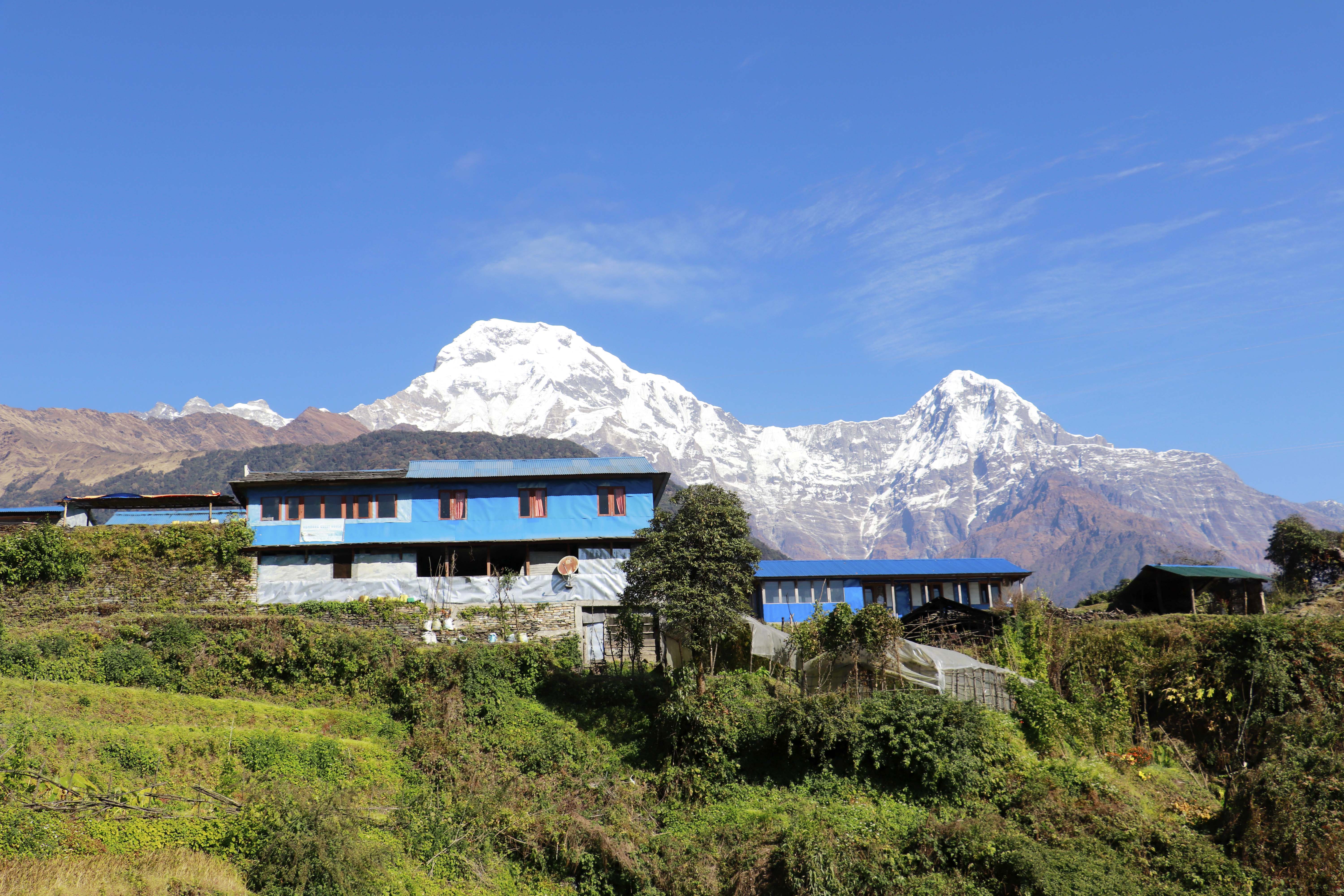
The Gurungs' native tongue, Phajau, is still spoken among the local population to this day. The village of Bhujung is characterized by its uncomplicated layout, which consists of a compact cluster of buildings, a single ward (the lowest level of administrative unit) that covers the entire village, stone-paved pathways, and the production of its native rice and electricity. The building of a green belt that will connect Bhujung and Ghale Gaun is currently underway.
Highlights of Bhujung Village
- Discover the handicrafts work and the Bhujung museum while you're at the Bhujung village.
- Pay a visit to the well-known tea garden as well as the Kaiyo waterfall.
- Participate in the hikes to the sites where honey hunting takes place.
- Wonderful time spent in the homestays provided by Gurung.
- Stunning sunrises and sunsets.
Helambu
Helambu village is a must-see village in Nepal. It is a beautiful village close to Kathmandu but far from the city. This secluded settlement may be found in the Langtang region, which is contained within Langtang National Park. If you are interested in traveling to isolated locations but have a limited amount of time available, Helambu Village is an excellent choice. If you decide to hike, the trip to the paradisiacal Helambu region begins with a drive from Kathmandu to Sundarijal. From there, you will begin your ascent. After ascending to Chisapani, continue walking in the direction of Kutumsang. The next stop on the trail after Kutumsang is Tharepati, which is a Sherpa settlement called Tarke Gyang. Tharepati is located above Kutumsang. Tarke Gyang is a stunningly picturesque settlement that boasts breathtaking panoramas of the surrounding mountains, thick forests, Buddhist monasteries, temples, and chortens. After that, a short ascent that doesn't require too much effort will lead you to a town named Sermanthang, which is known for its breathtaking scenery. An undiscovered treasure, Sermanthang is brimming with genuine Sherpa culture, breathtaking mountain vistas, agricultural farms, deep forests, and many other natural and cultural features. The residents of Helambu are affectionately referred to as "Hyolmos." The homestay establishments in these regions are wonderful ways to enhance the value of your travel experiences.
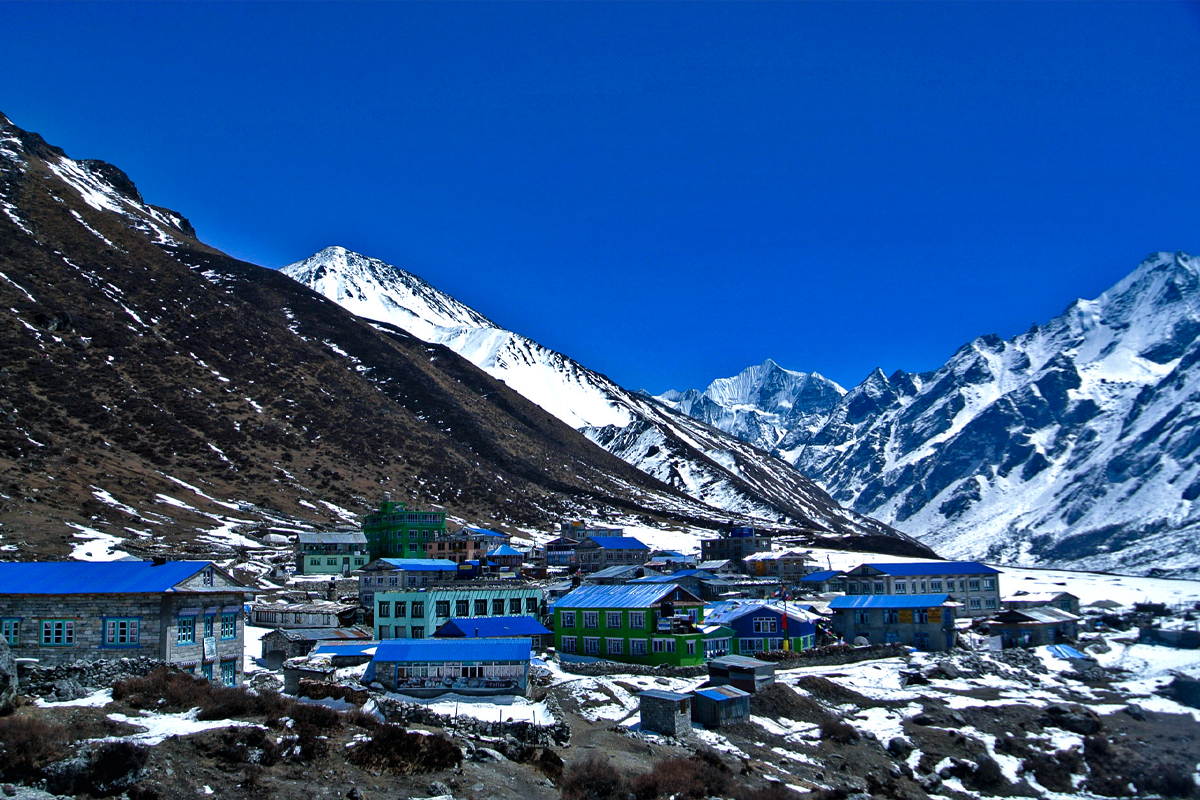
When the weather is clear in the spring (March to May), the Helambu village is in its most pleasant state and is the best time to visit. In a similar vein, you should avoid the winter season to avoid the possibility of significant snowfall. In the days leading up to significant holidays like Losar, the town of Helambu is bustling with activity and delight. Hyolmos celebrate the occasion by preparing traditional dishes, dressing in traditional garments adorning themselves with traditional accessories, and dancing to their traditional music.
Highlights of Helambu
- A stunning location to see on Kathmandu's northern outskirts, characterized by calm and verdant surroundings.
- At Tarke-Gyang, you can take calming strolls down a path that is less traveled to reach the stunning Helambu region.
- A magical wood filled with towering rhododendron, oak, magnolia, blue pine, and fir tree lines.
- Explore vibrant cultural communities that are rich in history and are adorned with elements of the age-old Buddhist faith.
- In the region of Helambu, in the territory of Hyolmo, the Jugal Himal range's last remaining mountain tribes can be found.
Chisapani
Chisapani is a village not far from Kathmandu that is frequently visited by tourists looking to spend a few days away from the city. The Chisapani hike will lead you to Shivapuri National Park, which is where the Chisapani settlement can be found.
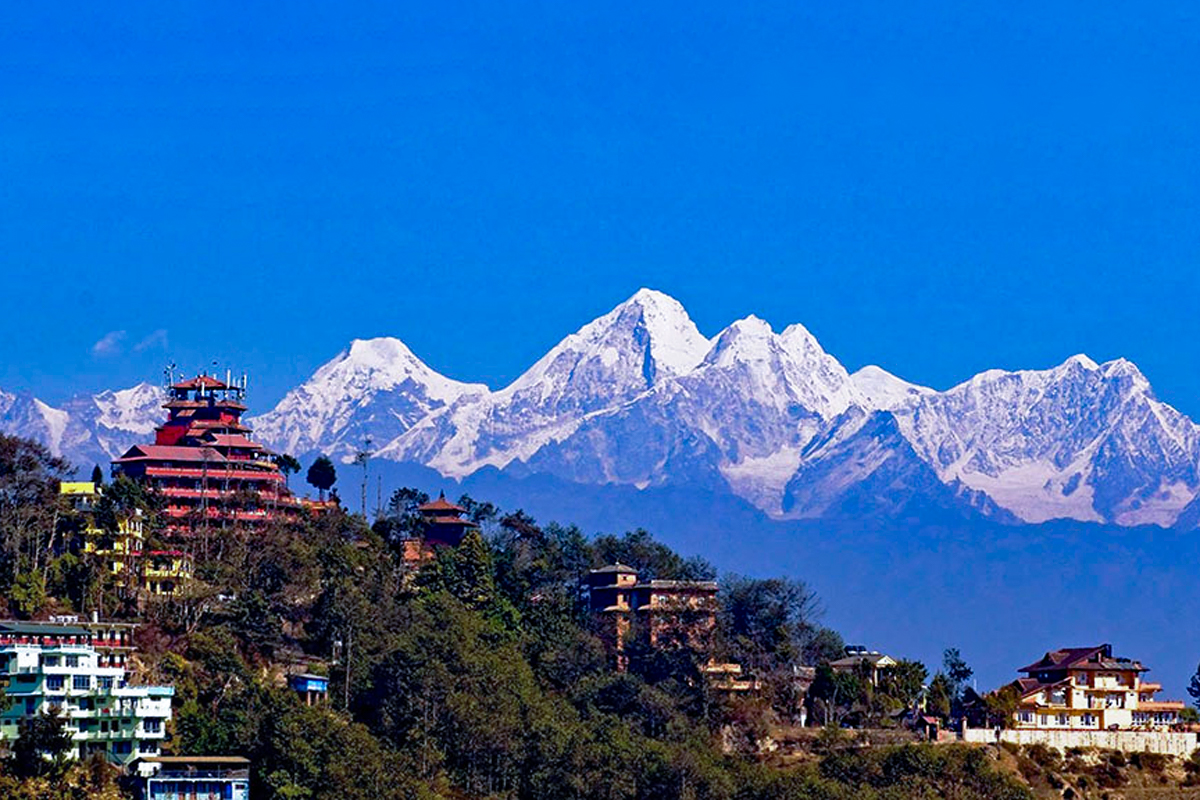
Chisapani is a lovely village that is situated at an elevation of 2,160 meters and offers an atmosphere that is both fresh and local as an alternative to the turmoil that can be found in Kathmandu. Your hike can begin in Sundarijal and go all the way to Chisapani. You can either take a local bus that leaves from the bus park and arrive in Sundarijal, or you can rent a vehicle. Take the exit marked "Sundarijal" after approximately 45 minutes of driving. In and of itself, Sundarijal is a wonderful resort that's perfect for spending quality time with friends and family. If you visit the location during the spring and monsoon seasons, you will have the opportunity to go on walks during which you can see massive waterfalls as well as vegetation.
Because the walking path is both hilly and uphill, you should ensure that you are physically capable of walking for long periods on it. If you started from Sundarijal and walked to Chisapani, it would most likely take you between 5 and 6 hours to get there. After the arduous hike, there are sufficient inns and eating establishments available where you may relax and indulge in some mouthwatering specialties to satiate your hunger.
Chisapani is also a well-known hill station, and during the winter months, it is possible to spot a large number of tourists there. The village is located in a breathtaking setting and provides breathtaking views of a variety of mountains, including Mt. Everest, Annapurna, Manaslu, Ganesh Himal, Langtang Himal, and many others.
Highlights of Chisapani
- Perfect for people with a limited amount of time or who are looking for a weekend getaway.
- A panoramic view of the snow-capped peaks of the Himalayas, including Everest, Langtang, Gourisanker, Annapurna, Manaslu, and Ganesh Himal.
- Walk through beautiful forests and local communities on the way to Chisapani and Nagarkot on this scenic hike. Take pleasure in strolling along the trails that wind through the verdant woodland filled with pine trees and rhododendrons.
- Discover the local villages and engage in conversation with the vivacious and friendly locals that reside there.
- Along the journey, you can stop at several Buddhist monasteries and Hindu temples that have been around for centuries.
Bandipur
Bandipur is a high-furrowed, well-preserved village that serves as a gateway between Kathmandu and Pokhara. Along the main street of the town are eighteenth-century Traditional villages in Nepal that serve as a showcase for Newari culture. However, time seems to have deteriorated here severely.
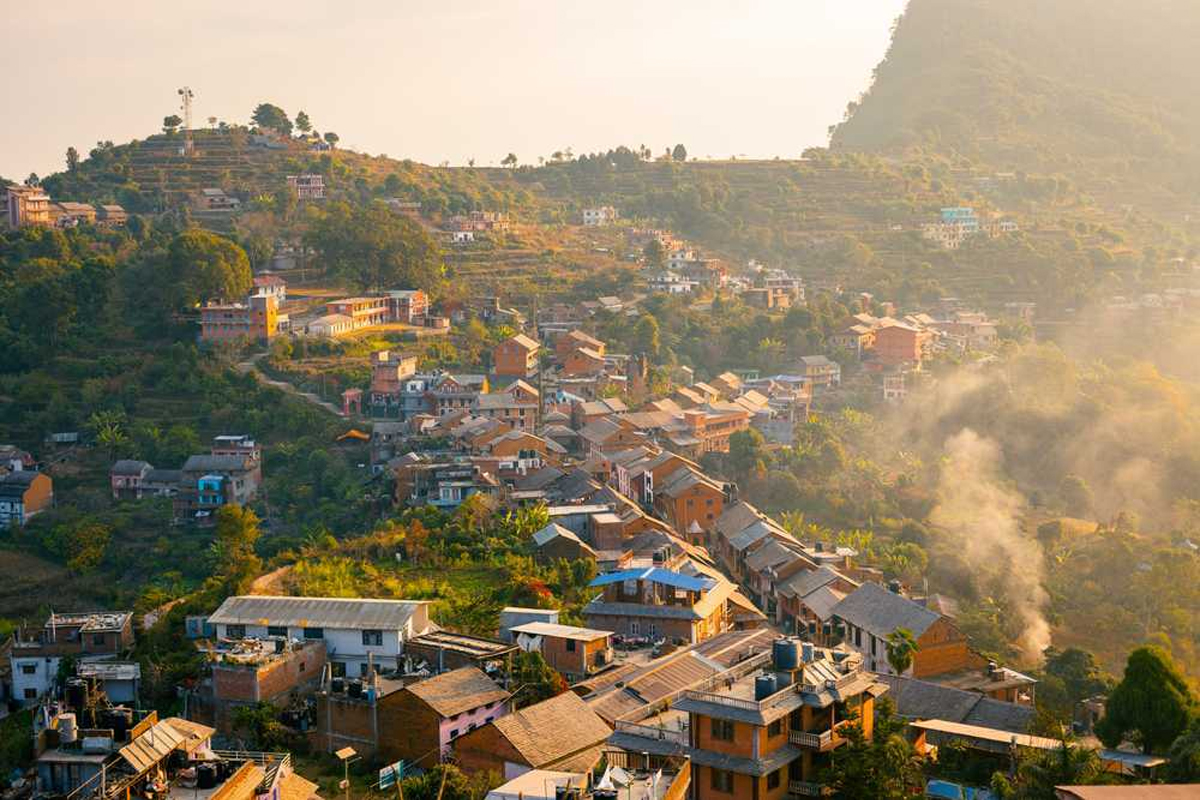
Bandipur is one of Nepal's most lovely settlements, a wonderfully maintained village atop a ridge with traditional row houses. Although it has required a lot of work to maintain this mystique while growing the town as a tourist destination, time seems to have stopped here. Temples and civic structures have been rescued from the brink of collapse, while abandoned buildings have been revived as cafes and lodges. It offers a decidedly European vibe because of its gorgeous 18th-century architecture, pedestrian area, and outdoor dining. The neighboring mountains provide some wonderful climbing routes, in addition to the peace. Adventurers can use a rope to descend to the bottom of the Siddha Gufa Cave cavern, soar in a paraglider 10,000 feet above the town, or go canyoning at the nearby cascades. After sunset, notice the intriguing link between the newly refurbished hotel and the old Newari structure. Yatri is a Nepalese woman from the Rular tribe. Some tourists would decide to visit Thani Mai Temple Viewpoint and ascend Gurungche Mountain to see the breathtaking sunrise. The Himalayas stretch over the horizon and the gorge is misty and obscured in the morning sun, creating one of Nepal's most stunning panoramic visual feasts. You must climb the steep mountain route for 30 minutes, beginning near the school at the southwest corner of the market.
Highlights of Bandipur
- Bandipur is a beautiful village with traditional row buildings on a ridge in Nepal.
- It is a charming village that acts as a crossing point between Pokhara and Kathmandu.
- The mountains nearby offer some excellent climbing courses.
- Experience seekers can descend to Siddha Gufa Cave's base, paraglide 10,000 feet above the village, or canyon at adjacent cascades.
Lo Manthang
Lo Manthang is one of the gorgeous settlements that can be found tucked away in the most northern part of the Mustang area. It is the administrative center of either the Kingdom of Lo or the Mustang district, and it is located at an elevation of 3,800 meters. The village of Lo Manthang is one of the most famous villages in Nepal for its extensive Tibetan Buddhist culture. Perfect for people with a limited amount of time or who are looking for a weekend getaway.
Everest, Langtang, Gourisanker, Annapurna, Manaslu, and Ganesh Himal are some of the snow-capped peaks in the Himalayas that can be seen in this view. Walk through beautiful forests and local communities on the way to Chisapani and Nagarkot on this scenic hike. Take pleasure in strolling along the trails that wind through the verdant woodland filled with pine trees and rhododendrons. Explore the nearby villages and talk to the people who live there. They are lively and friendly.
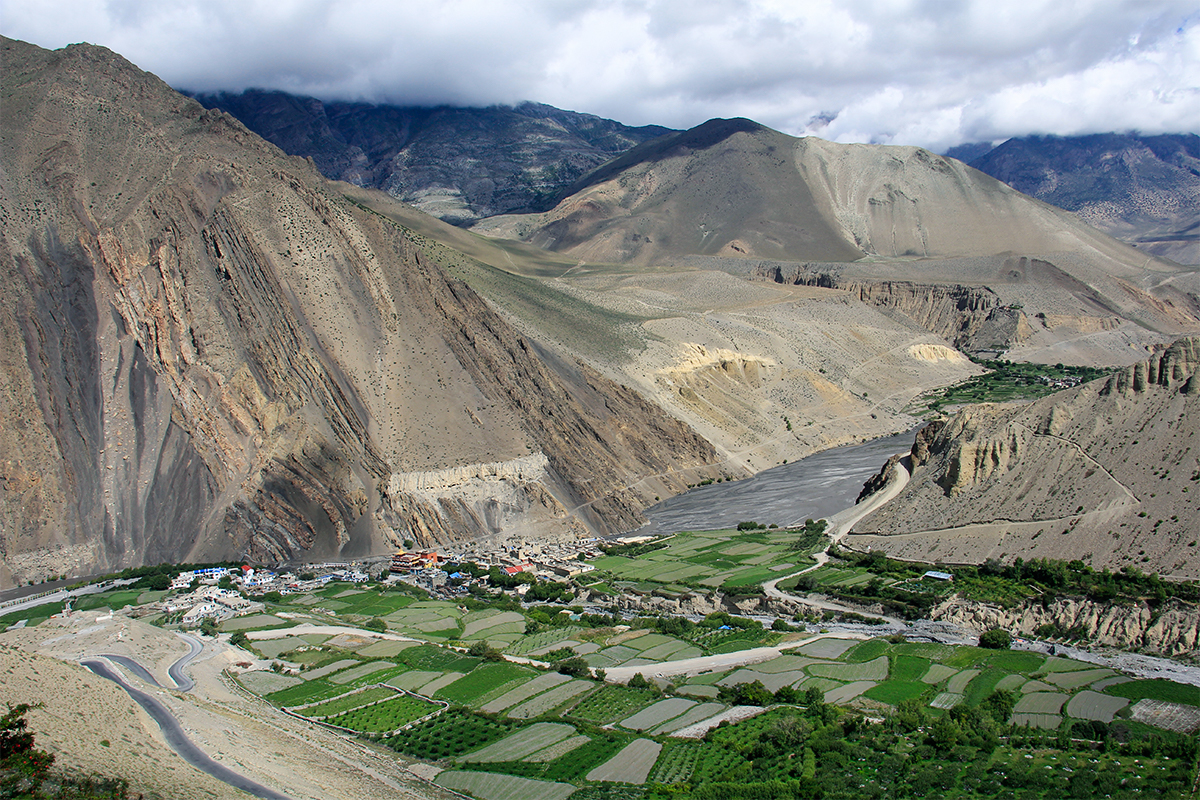
Along the journey, you can stop at several Buddhist monasteries and Hindu temples that have been around for centuries, as well as its one-of-a-kind geographical beauty, which is quite comparable to Tibet. You'll get a stunning view of the Dhaulagiri and Annapurna ranges from Lo Manthang. Lo Manthang is located in Nepal. Many old Buddhist monasteries have been kept in good shape so that tourists can see them. Each monastery has a unique set of legends that date back to its founding; these legends have enormous historical and theological significance even today. Also, it is still a good idea to visit the royal palace, which is inside the walled city.
Highlights of Lo Manthang
- Lo Manthang hamlet has 14,000-foot cliffs with old Buddhist artwork from which the majority of the paintings are influenced by Newari art.
- The hamlets of Lo Manthang contain 14,000-foot cliffs with ancient Buddhist artwork. Most of the paintings have Newari art as an inspiration.
- It is one of the stunning villages that is tucked away in the far northern region of the Mustang region.
- The vast Tibetan Buddhist culture of the settlement of Lo Manthang is its most significant aspect.
- A broad panorama of the Himalaya's snow-capped peaks, including Ganesh Himal, Everest, Langtang, Gourisanker, Annapurna, and Manaslu.
- Several old Buddhist monasteries can be visited and looked at because they have been meticulously preserved.
Dhampus
The village of Dhampus lies 25 kilometers north of the Kaski district's geographic center. At an elevation of 1,650 meters above mean sea level, Dhampus is home to the typical Gurung township resident. The town's Gurung people are worried, so the townsman gives them a spell to make them feel better. By adding, wandering, matching, or flouting, you can get a landscape view of the Himalayas. From Dhampus, you can see the Annapurna Urbanization Block, the Manaslu Bank region, and the Langtang Mountain Range. It would be an incredible assumption to make about the views of the sunrise and sunset from further down the hill.
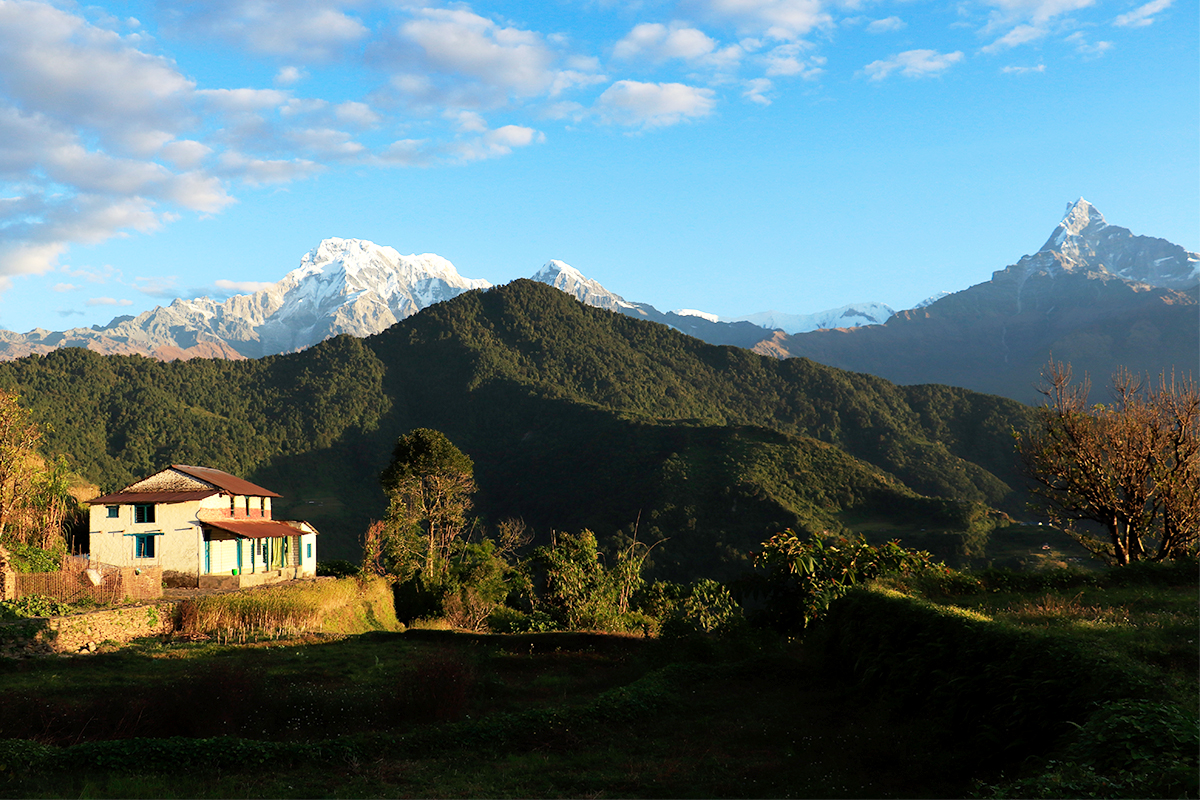
The most important thing you can do during your time in Dhampus is gain experience in the nearby dynamic environment. In addition, the hamlet of Dhampus is an excellent starting point for strenuous excursions and hikes that depart from the Pokhara Valley. The information is specific regarding entry to the Annapurna management parade ground as well as the combination of the Annapurna awful starting-point stroll and combined success treks. There are a few different hiking trails in the neighborhood that can help you complete Dhampus. To reach their kinsmen in Dhampus, tuchis travel along an off-road route. The match-up action begins in the village of Phedi, which is around a half-hour drive from Pokhara. Lower Dhampus is around 2 kilometers away and may be reached by beginning the challenging ascent from Phedi. You might catalyze the diversion towards the village community of Dhampus village if you are after hours.
Highlights of Dhampus
- Breathtaking vistas of the mountain range.
- Explore stunning sunrises and sunsets.
- The best possible chance to participate in adrenaline adventure sports.
- The most memorable encounter with the beauty of Pokhara.
Manang Village
The stunning Manang village can be found along the Annapurna circuit, which is the most well-known hiking path in Nepal. The upper village and the lower village are both part of it. After traveling via the settlements of Pisang and Braga, you will arrive in Manang, which is located at an elevation of 3,518 meters. The landscape of Manang village, which resembles a barren desert, as well as its natural beauties, is breathtaking and wondrous. Within the trans- Himalayan villages in Nepal, the picturesque village of Manang may be found nestled in the valley just below the Gangapurna and Annapurna III mountains. It is a historic town steeped in history, and it features breathtaking vistas of the surrounding mountains as well as a rich cultural heritage. Traditional temples, monasteries, mountains, and vistas with dry landscapes are all located in the rain shadow region that Manang is located in. Manang serves as a significant commercial crossroads between Nepal and Tibet.
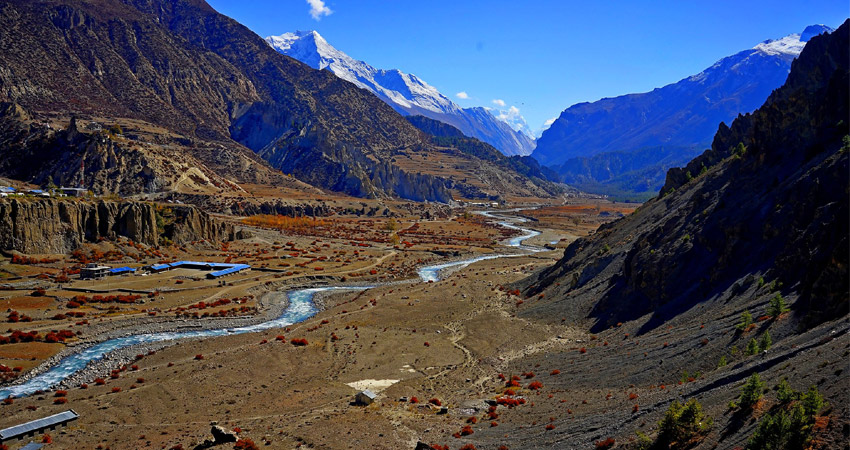
At an elevation of 2,980 meters, the picturesque community of Chhusang may be found in Upper Mustang. A dry, desert-like landscape characterizes this region because it is located in the rain shadow cast by the Annapurna range. The settlement is breathtakingly framed by a massive red cliff all around it. You may reach Chhusang village by hiking or hiring a jeep from Kagbeni village. You will have the opportunity to see several old caves that are shrouded in mystery, as well as Buddhist temples, monasteries, and chortens that showcase the distinctive Tibetan-Buddhist culture and customs. You will also have the opportunity to participate in the traditional way of life in the Tibetan mountains.
Highlights of Manang Village
- The breathtaking panorama of the Thorong La Pass is 5416 meters (17764 feet) high.
- Watching the gorgeous sunrise against Manang village.
- The breathtaking panorama of the frozen lake will undoubtedly bring a smile to your face.
- The breathtaking panorama of the frozen lake will undoubtedly bring a smile to your face.
- Must see sights like Ice Lake, Taken Gompa, Milarepa's cave, and Gangapurna Lake.
Jiri
Jiri is a municipality located in the Dolakha District of the Bagmati Province in the central Nepali region of Jiri. The primary access point to the Everest region is located in Jiri, which is approximately 190 kilometers away from Kathmandu. Jiri had been visited by nearly all of the Everest expeditions, including the one that was led by John Hunt and Edmund Hillary, two of the most famous climbers in history. A majority of the available lodging can be found in Jiri Bazaar's Jiri Bazaar Lodges, which are located on either side of the main road.
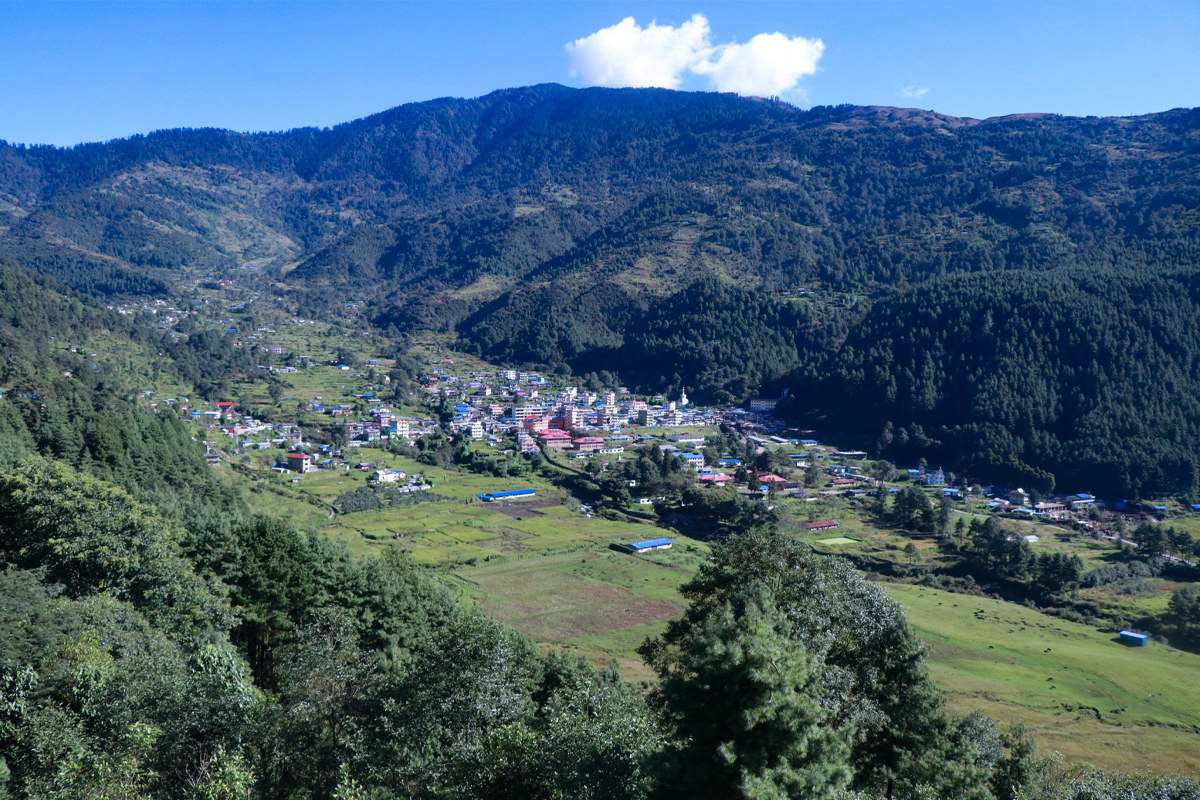
Jiri is the starting point for many hikes into the Mount Everest region because it is the location of the closest road head. The journey to Lukla can take up to eight days to complete. Jiri is not the starting point for many treks; in fact, just 5% of all hikers who attempt the challenging journey to Everest Base Camp begin their journey in Jiri. The remaining 95% of travelers opt to take a flight into the little airfield at Lukla, which allows them to skip a week of strenuous yet breathtaking hiking.
Even though the trailhead that begins in Jiri and ends in Sagarmatha National Park is considered to be the "traditional path to Everest," the trailhead that began in Kathmandu was the initial trailhead. Jiri was visited by all of the early Everest expeditions, including the one that was headed by John Hunt and was the one that brought Tenzing Norgay and Edmund Hillary to the top of the mountain. Therefore, another name for Jiri is the "Gateway to Mount Everest."
It is a point of pride to proclaim that Jiri is the homeland of an ethnic group known as the Jirels. They are fond of being referred to as Jiriba. In the Jirel dialect, Ji signifies brilliant or flaming, while Ri refers to a mountain or hill, and Ba refers to the people. Therefore, Jiriba means "people from the mountain." Jirba signifies people like leopards and the people take great pride in being referred to as leopards.
Highlights of Jiri
- Explore Jiri Bazaar, commonly known as the "Gateway to Mount Everest."
- The Shailung Hills, a group of one hundred hills in Nepal, are a must-see.
- It is recommended that visitors to Jiri go "Firi firi," which means to explore the places immediately surrounding Jiri.
- Enjoy stunning views of Langtang Himal, Ganesh Himal, Gauri Shankar, Dorje Lakpa, Shisha Pangma, and Jugal Himal.
- You can choose to go to neighboring sites like Buddha Park, the Kalinchowk Bhagwati Temple, or Tenzing Hillary Park, or you can simply rest and take in this natural setting.
Daman
Daman is a popular tourist spot in Thaha Municipality, Makwanpur District. As a result of its location at an elevation of 2,250 meters above sea level, the area is well-known for the pleasant weather and stunning natural scenery that it offers. Daman is a wonderfully lovely gift from nature, both in terms of its physical landscape and its rich cultural history. The Nepalese federal capital of Kathmandu is located 56 kilometers away from Daman, and Hetauda is located 55 kilometers away. In addition to contributing to the expansion of village tourism in Nepal, the old Tribhuvan Highway, which did not officially open until the year 2013 BS, has played a role. Daman is also the location of Nepal's first viewing tower, which was given the name Sheetal View Tower. One may enjoy a bird's-eye view of Palung, Daman, Bajrabarahi, and Chitlang, as well as eight of the ten tallest mountains in the world, from this observation tower, which is situated at the center of the valley.
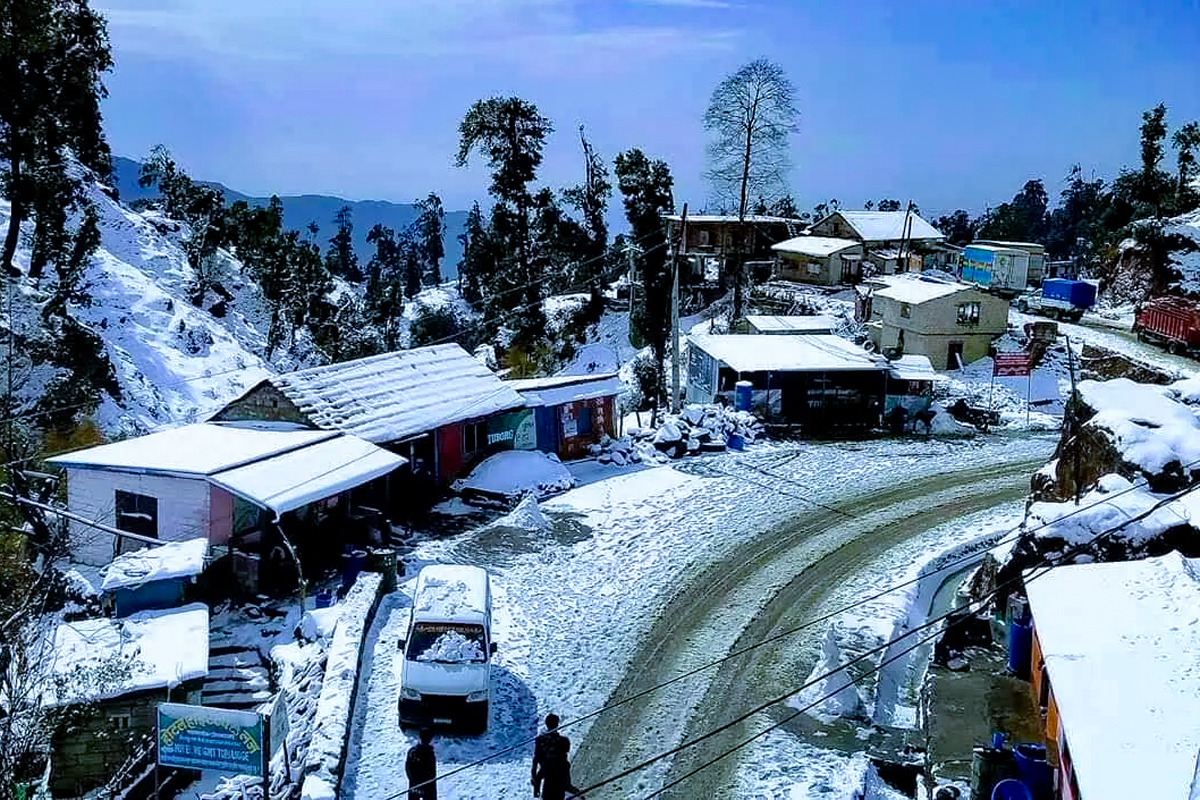
It is generally agreed that Daman has a very impressively high level of biodiversity. A temperate floricultural center has been established here to research mountain botanical gardens, fruit and vegetable crops, as well as forests and flora. One of the one hundred places in Nepal designated by the central government as being ideal for tourists is Daman.
Both the Buddhist master Rampoche and the Hindu deity Risheshwar Mahadev are said to have sprung from the holy country of Daman. Between Seam Bhanjyang and Daman is where you'll find this holy and well-known pilgrimage destination. From there, via Tribhuvan Lokpath, one must walk for approximately one hour to arrive at this location. Large numbers of pilgrims congregate here on Fridays and Saturdays. Every single year, on the important days of Ekadashi, Phagupurni, Janapurni, and Shivaratri, this location plays host to a unique fair.
Highlights of Daman
- One of the federal government's 100 designated tourist places in Nepal.
- The Hindu holy place of Risheshwar Mahadev and the Buddhist guru Rampoche.
- On the major Ekadashi, Phagupurni, Janapurni, and Shivaratri days, there is a special fair held here.
- Daman has Nepal's first view tower, Sheetal View Tower, which offers a panoramic view of Palung, Daman, Bajrabarahi, Chitlang, and 8 of the 10 tallest mountains in the world.
In conclusion, all of these gorgeous and picturesque villages in the Himalayas of Nepal are representative of the natural and cultural splendor that Nepal possesses. All of these stunning villages have something special to offer visitors: a sense of peace and tranquility, along with a certain old-world allure. You will have the opportunity to live a rustic lifestyle that is unaffected by modernization.
Explore some of the most gorgeous villages in the Himalayas of Nepal to find some of the country's best-kept secrets. These small high-altitude settlements provide you with peace and tranquility away from the hustling and bustling of modern cities, and you will be astounded by the raw beauty and rustic appeal of these hamlets.














